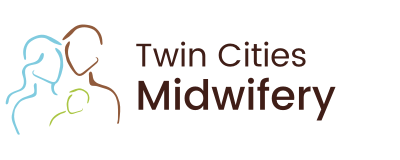08 Dec A Guide to Birth Plan Writing
Birth plans can be a helpful place for parents to compile a list of their preferences for their care and their new baby’s care. It can be a useful place for parent’s themselves to organize their thoughts as well as a place to share information with care providers. For families planning home births with solo-midwife practices their midwives have gotten to know them and their preferences well over the course of their prenatal care. Some home birth families prefer not to write a home birth plan because of this -though they may write a hospital plan and a c-section plan in case either of those events arise. Know that if you do want to write a home birth plan, your midwives welcome it! Not all families choose to write birth plans for any of the possible scenarios and that is just fine. This blog is for families choosing to write a birth plan and looking for some ideas on how to start.
One of the most important parts of a hospital birth plan is to be short, to the point, and polite. Hospital based care providers are often happy to read birth plans -however they are also busy taking care of multiple people so the more concise and direct your preferences are written, the easier it is for them to be read completely. It can also be helpful to express gratitude toward the providers for the care they will be providing at the start of your birth plan. Try to keep hospital birth plans to one page. If you choose to write a home birth plan, you don’t need to limit yourself to a certain number of pages since your midwife will have plenty of time to read your plan ahead of time.
Some things to consider for all planed birth locations are:
- Your name and your partner’s name
- Who will be with you (Doula, photographer, your midwife) -write their role and their name
- If older children will be with you write their names and the name of the person in charge of them (grandma or friend or doula, whoever it may be)
- Baby’s name and gender if known and being shared with others
- Your vision for your birth space -lighting, music, support people talking through contractions or quiet through contractions, etc.
- Preferences for labor positions -in water, moving through contractions, out of bed, in bed, etc.
- Fetal Heart Tone Monitoring -continuous, intermittent, external, internal
- GBS Status (if known) and treatment plan
- Vaginal Exam Preferences – such as minimal vaginal exams, if you want to know numbers of dilation, etc
- Pushing Preferences -directed, mother-led, with/without counting, etc.
- Perineal Preferences -counter pressure at the time of crowning, tear naturally, episiotomy preferences, etc
- Preferences regarding laboring or birthing in water if possible
- Preferences for Partner’s Role -to catch, cut cord, skin to skin, if need for separation of mom & baby will partner can with baby, etc
- Cord clamping -delayed, immediate, after placenta delivered, cut by partner or older siblings
- Newborn Procedures
- Vitamin K
- Erythromycin
- Hepatitis B Vaccine
- First Bath – such as performed in presence of parents, by parents, at home, etc
- Immediate Skin to Skin with mom or partner
- Newborn Exam – delayed, to be performed in the presence of one or both parents
- Feeding – exclusive breastfeeding, bottle feeding, mixture of both, yes/no to pacifiers, preferences for donor milk or formula if needed, etc
- Newborn Screening: Metabolic, Hearing and CCHD
- Placenta Plans -discard, keep for burial or encapsulation or other reason
Things to include in hospital birth plans (in addition to the above list):
- Augmentation preferences -If labor augmentation (speeding up) is needed what are your preferences? Such as, nipple stimulation, stripping of membranes, rupture of membranes (breaking your water), prostaglandin suppositories, pitocin, etc
- Comfort Measure preferences -water, massage, hypnosis, vocalization, movement, epidural
Things to include in a Cesarean birth plan:
- Preferred type of anesthesia
- If you would like the drape to be lowered at the time of birth or clear drapes to be used so mom can see birth
- If you would like mom to have one or both arms free to hold baby and/or initiate breastfeeding
- If you would like mom or partner to do skin to skin with baby while in the OR
- If you would like partner or doula to accompany baby to nursery if it is needed
- Things from the first list (above) that can be included in C-section birth plans can also include:
- Your name and your partner’s name
- The names/roles of the rest of your birth team
- Newborn procedures
- Feeding plans
- Placenta plans
Writing tips and other things to know:
- Use bullet points -this way things are simple and direct for your care providers
- Use flexible language “we prefer” vs. “we require” or “we demand”. Demonstrating an ability to work with care providers can go a long way in receiving positive care
- Other things some people include are:
- Contact info of birth team (i.e. doula and photographer’s phone numbers)
- List of items to bring with to the hospital in the event of a home birth transport (also where in the home these items can be found)
- Share your plan with your provider during prenatal visits, so you can discuss it prior to the birth
- Birth plans are not a requirement -whether your write one or not is completely up to you
Please remember that for all the planning and preparing we do for births there will almost always be an unknown that happens. Knowing your preferences and your options before hand can be very helpful to you, your partner and care providers. At the same time, be open to your labor and birth as it unfolds, and plan to adjust your birth plan as needed in the moment.
Here at Twin Cities Midwifery, we have samples of birth plans we’re happy to share if that would help as you create your birth vision. Just ask and we will send them over! Happy Birthing!




Sorry, the comment form is closed at this time.